Suriani
Animal-human hybrid stickers invading Parisian streets and a gallery

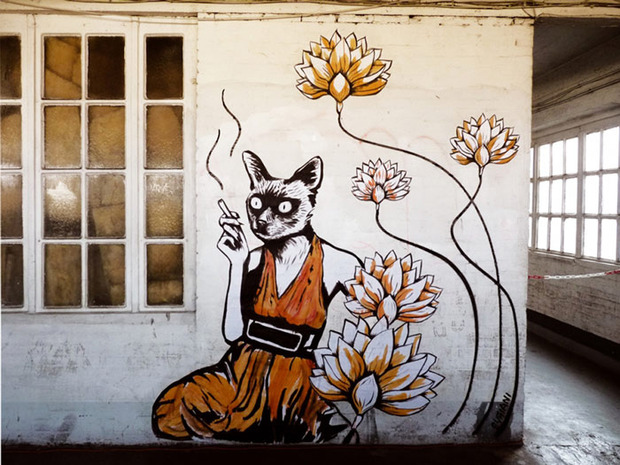
While marketing and mainstream communications campaigns have derived branding inspiration in the comic-like cartoon style of street art, and the values attached to its culture—freedom, community, transgression—the paradox still exists to see it framed and sold through traditional art channels.
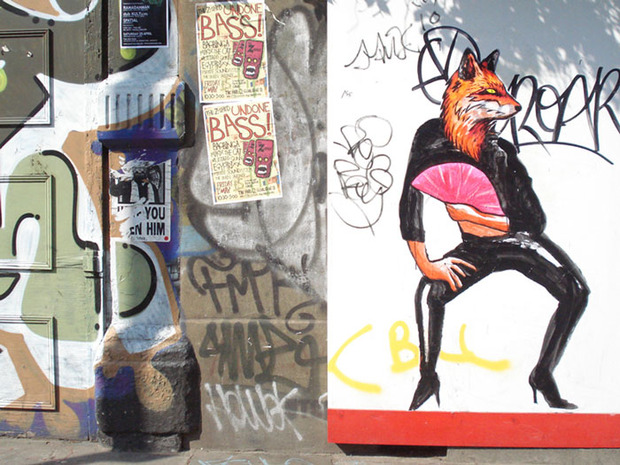
We caught up with street artist Rafael Suriani at his recent show, “Collages Urbains”, at Cabinet d’amateur gallery in Paris, where he told us more about street art and his relationship with the medium.
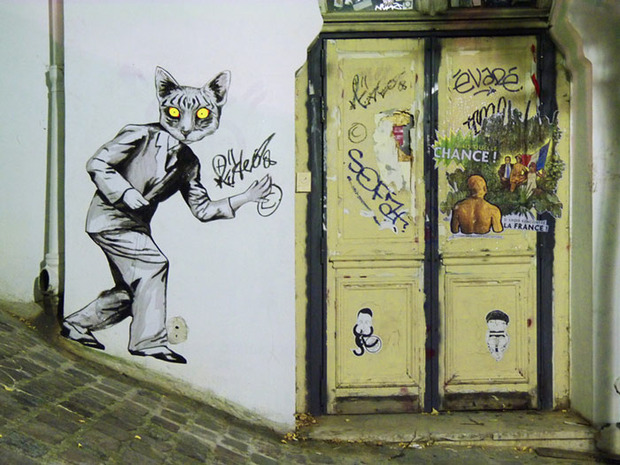
Suriani’s mark features animals, surviving and thriving in the streets for its powerful and highly recognizable aesthetic. In his half-human-half-animal figures, the animal faces act as liberating masks, allowing the artist to express social criticism in an elegant way. The vibrant, seemingly playful creatures refrain from getting too serious and maintain a suggestive tone that avoids the obvious.
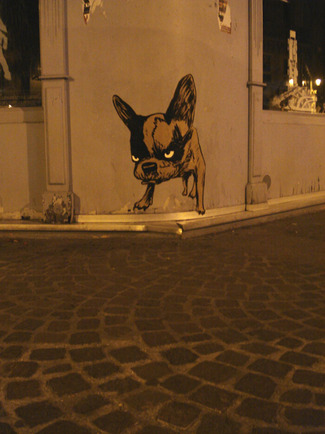
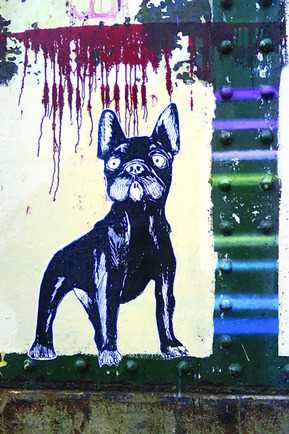
The stickers are the result of a double-binding process that first assembles man and animal, then adheres the resulting figure to the wall. In the past, Suriani has drawn from his Latin-American heritage, playing with shamanic mythology figures such as toucan or jaguar. In his recent series, on the other hand, he is more interested in urban domestic animals such as cats and dogs—according to the artist, the convention that they tend to resemble their owners offers a metaphoric way to talk about us people. Recently Suriani made a series of French “Bulldogs” as a special dedication on London walls, using this breed to cartoon and make fun of some French characteristics. Each dog expresses a different state of mind—humor, spirituality, criticism or beauty.

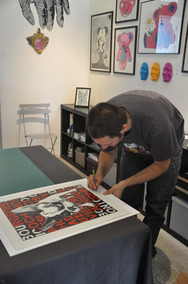
Suriani uses the rare technique of hand-painting every poster he sticks on the streets. Making each sticker is the result of a process involving selecting photos from the Internet, cutting them in Photoshop, then screening and painting before cutting the final product. Such repetition lies at the heart of street art practice, which is often based on plastering as many spots as possible, invasion-style.
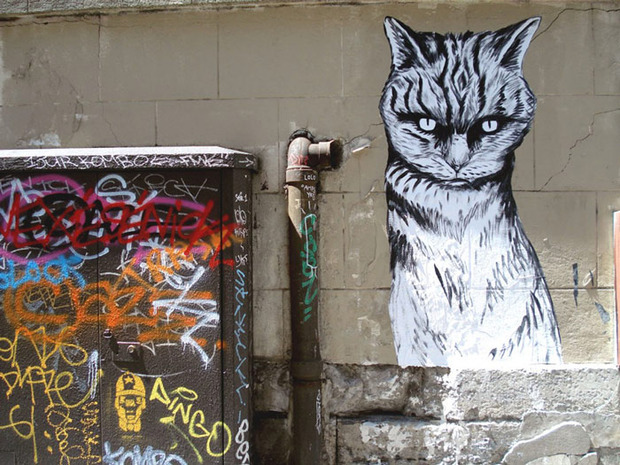
When considering the ephemeral fate of the piece of work destined for degradation of the elements, police destruction or theft from passers-by, the time and effort for such little reward seems remarkable. Suriani explains, however, that the fleeting nature of his work is freeing and allows him to be audacious with both subject and technique. To him, because there is no pressure or constraint, that achievement is rarely a failure.
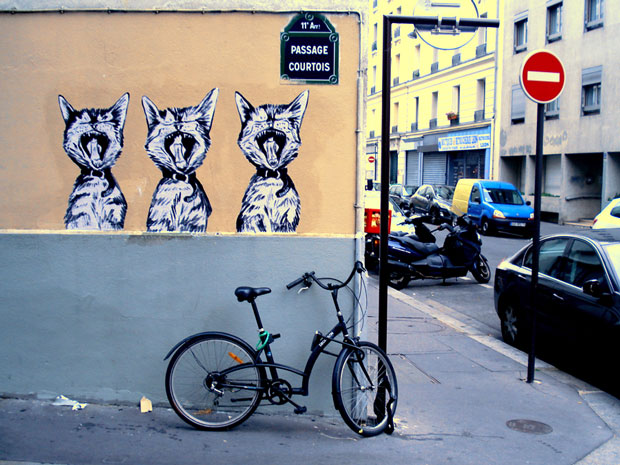
In the end, the piece of art is not the only sticker by itself, it is the sticker in its context, seen as a whole on the wall with the daylight shining on it, the motorbikes parked against it or the branch of a tree creeping across. Rarely is the work’s time spent on the wall its only life, after all, with the rise of dedicated photographers immortalizing the scenes for the Internet.

Suriani claims his intention to step into the city’s landscape by bringing much-needed beauty comes with a positive message. Rather than being aggressive or controversial, Suriani takes pleasure in having people on the street enjoy his figures. His work is bound to the city—physically, geographically and socially—compelling the public to refresh their view of their surroundings and drawing their eyes to the places that typically go unnoticed. As an architect, Suriani has found a way to unveil the city and change people’s perception of the scenes they see everyday without truly seeing them. The choice of venue is very important, based on aesthetic consideration with attention to the context and surroundings like the location.
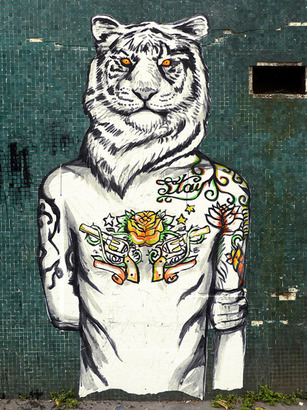
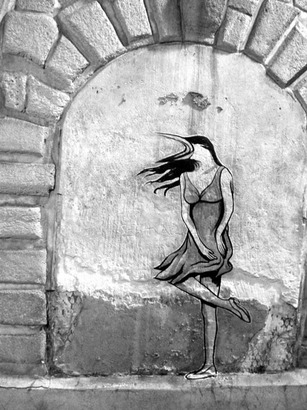
Hailing from Brazil, home to a strong and lively street-art culture, Suriani’s passion makes sense. In his native Sao Paolo, a young city constantly changing and under construction, street art is welcome and considered as a positive contribution to embellish the city. Far from being forbidden, stickers can last as long as two years years. There, the practice is often connected to a more political involvement such as a protest against real estate speculation or to support immigration, and Suriani has brought a bit of this spirit to France, where he participated in a campaign by the French Aids support league Act Up as part of a collective huge fresco.

In fact, Suriani reflects on his practice as a means to get to know Paris and socialize within the community when he moved from Brazil—one bound by a lifestyle of taking risks, celebrating fragile achievements and maintaining that cherished sense of freedom. The community has certain rules about never judging the quality of others’ work and paying the proper respect to the established know-how. Contrary to Brazil where street art involves only young artists, in France people from all ages work on the walls. While collective projects sometimes happen when a whole group invades a venue, one-to-one interactions are more common. Stickers posted in response to others have been known to spark a friendly dialog and lead to real-life meetings.
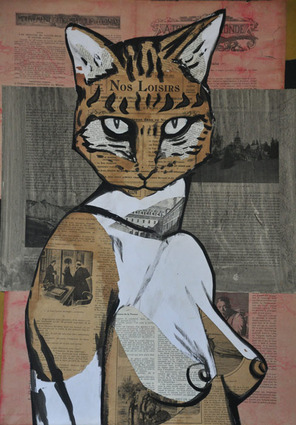

As for the transgressive aspect of the street stickering, Suriani sees it more like a tricky game, avoiding the police and trying not to get caught—even though he always works during the day, his favorite being Sunday. He also notes the difference between temporary, removable stickers and permanent paintings on walls and surfaces. For Suriani, the key to street art is freedom—no diploma is needed, anybody is welcome to participate regardless of means or resources, and artists are at liberty to experiment and constantly change their style.
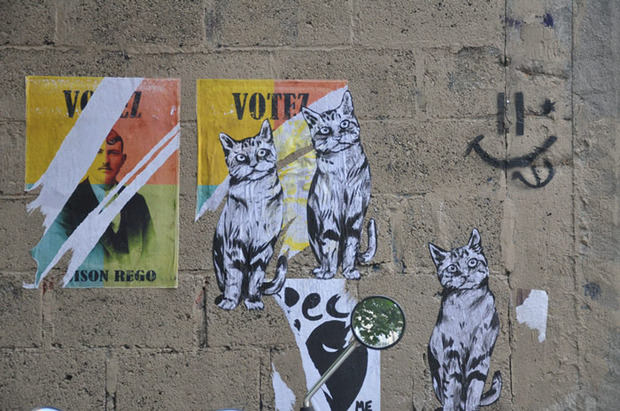
The idea of presenting a gallery, then, presents that paradox. But, Suriani explains, in the end it’s not about street art in a gallery. Having been painting, drawing and cutting since he was a child, he brings his authentic artistic process to this show. A mix of original and existing pieces, the series simply presents the language of street art in a different venue.










